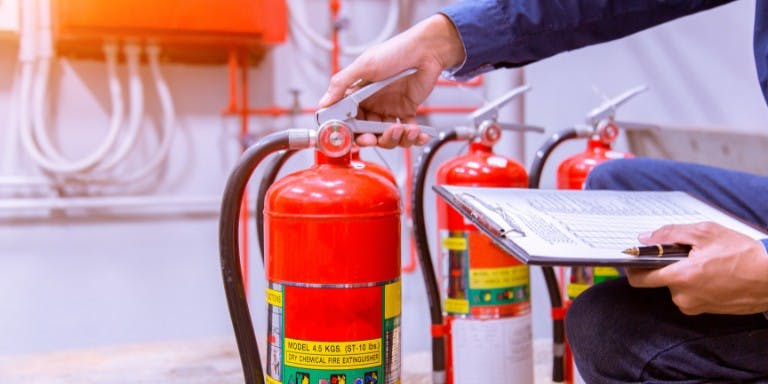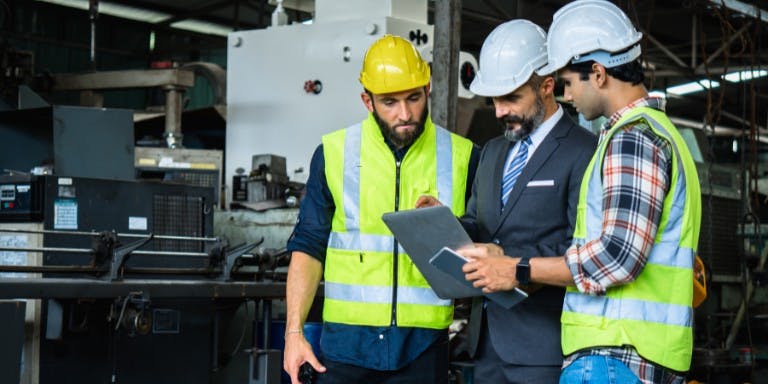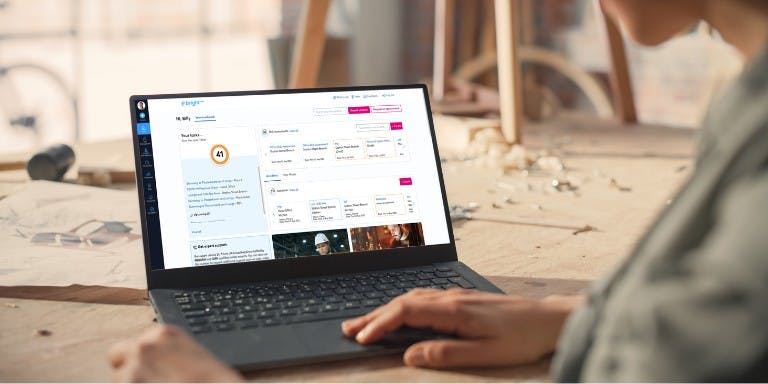First published on Friday, July 24, 2020
Last updated on Sunday, March 16, 2025
Jump to section
Home working in the UK has seen a significant rise, especially in the wake of the pandemic. With hybrid and homeworking becoming the new norm, it’s crucial as a business owner to prioritise health and safety for your remote employees.
Taking care of your staff working from home isn’t just a legal obligation; it’s also a moral and business must-have. You must navigate various health and safety regulations to create a safe and productive work environment, regardless of where your employees are located.
What are the safety laws on working from home?
When it comes to health and safety for employees working from home, several key pieces of legislation govern your responsibilities as an employer in the UK.
Health and Safety at Work Act 1974 (HSWA)
The HSWA places a duty on employers to ensure, as far as reasonably practicable, the health, safety, and welfare of all employees—including those working from home. This means as a business owner, you must take steps to protect homeworking employees from risks to their health and safety.
Management of Health and Safety at Work Regulations 1999
The Management of Health and Safety at Work Regulations 1999 require employers to carry out risk assessments for all work activities, including those performed at home. So, you must identify potential hazards and implement measures to mitigate these risks, ensuring a safe working environment for remote employees.
Display Screen Equipment (DSE) Regulations 1992
The DSE Regulations set out requirements for the safe use of computer workstations. Employers must ensure that home office setups are ergonomically sound, covering aspects such as screen positioning, seating posture, and lighting. This helps prevent issues like eye strain, musculoskeletal problems, and other health concerns related to prolonged computer use.
The Health and Safety (First Aid) Regulations 1981
Under the Health and Safety (First-Aid) Regulations 1981, employers are responsible for assessing the first aid needs of their employees, including those working remotely. This may involve providing first aid training or ensuring that your homeworking employees have access to first aid supplies.
Best practices for home working laws
To keep your business compliant with these laws, you may want to consider consulting with health and safety experts. Services like BrightSafe offer 24/7 access to health & safety consultants and a library of expert templates, making compliance a breeze.

What are the challenges of health & safety when working from home?
Managing health and safety for employees working from home presents several unique challenges, including:
Lack of direct oversight
Without the ability to directly oversee employees in their home environments, you may find it difficult to ensure that health and safety standards are consistently met. This lack of visibility can make it challenging to identify and address potential hazards promptly.
Variability in home office setups
Home office setups can vary widely from one employee to another. Some may have dedicated office spaces with ergonomic furniture, while others might be working from kitchen tables or sofas. This variability makes it harder to standardise health and safety measures across the workforce.
Identifying and mitigating risks
Several risks are associated with home working, including:
Poor ergonomics: Inadequate workstation setups can lead to musculoskeletal issues, eye strain, and other health problems.
Mental health concerns: Remote working can sometimes lead to feelings of isolation, stress, and burnout, which can impact your teams’ wellbeing.
Electrical safety: Ensuring that home office equipment is safe and properly maintained is another challenge, as employees may use personal devices that haven’t been safety-checked.
Addressing these challenges requires a proactive approach, including regular risk assessments, providing ergonomic guidelines, and offering mental health support.
Practical steps you can take to meet your health and safety responsibilities
To effectively manage health and safety for homeworking employees, consider the following practical steps:
Conducting risk assessments
Perform risk assessments for home offices to identify potential hazards. This can be done through self-assessment forms that employees fill out or via virtual consultations with health and safety professionals.
Alternatively, you could use health and safety software that comes with 600+ risk assessment templates that save time and help you meet your legal obligations for hundreds of different risks.
Providing ergonomic guidelines
Offer clear guidelines on ergonomics and proper home-office setup. This includes advice on screen positioning, seating posture and lighting to prevent issues like musculoskeletal problems and eye strain. Providing visual aids or instructional videos can be particularly helpful.
Offering mental health support
Support employees’ mental health wellbeing by offering access to mental health resources, such as an Employee Assistance Programme (EAP). This can be counselling services, stress management workshops, and regular check-ins to ensure employees feel supported and connected.
Ensuring access to equipment
Make sure employees have access to necessary equipment to meet safety standards. This might include ergonomic chairs, adjustable decks, external monitors, and other accessories that promote a safe and comfortable working environment. Providing a stipend or reimbursement for home office equipment can also be beneficial.

Meeting your compliance obligations with staff working from home
Leveraging software solutions can significantly streamline the process of managing health and safety for homeworking employees. Here are some key tools you can use to keep staff safe and your business compliant:
Risk assessment tools
Using digital risk assessment tools, employees can conduct self-assessments of their home-working environments. These tools help identify potential hazards and automatically track compliance, making sure that near misses and accidents are flagged and addressed promptly.
Employee monitoring and training
Learning management solutions can offer reminders, check-ins, and training modules on safe work practices. These tools ensure that employees are regularly updated on health & safety protocols, and easily access training resources to maintain a safe working environment.
Health and safety reporting platforms
Accident and near-miss reporting software allows employees to report health and safety concerns remotely make it easier for employers to respond promptly. These systems facilitate the reporting of accidents, near misses, and other safety issues, ensuring that they are documented and addressed in a timely manner.
Wellbeing software
Wellbeing apps and platforms monitor employee wellbeing, track work hours, and provide mental health support and resources. These tools help business owners keep an eye on their employees’ mental and physical health, offering support where needed to maintain overall wellbeing.
Need help with managing health and safety for your remote team
You have just as much a role in ensuring the health & safety of homeworking staff as any other staff. This includes conducting regular risk assessments, providing ergonomic guidelines, offering mental health support, and ensuring access to the right equipment.
Actively managing these responsibilities is essential to create a safe and productive working environment.
To make this process easier, BrightSafe offers comprehensive support. Our solutions include 24/7 access to health & safety consultants, digital risk assessment tools, and a library of expert templates. These tools help you stay compliant with regulations and ensure the wellbeing of your remote workforce.
Book a demo with one of our friendly experts or call us on 0800 470 2432 to learn how BrightHR could help your business.











